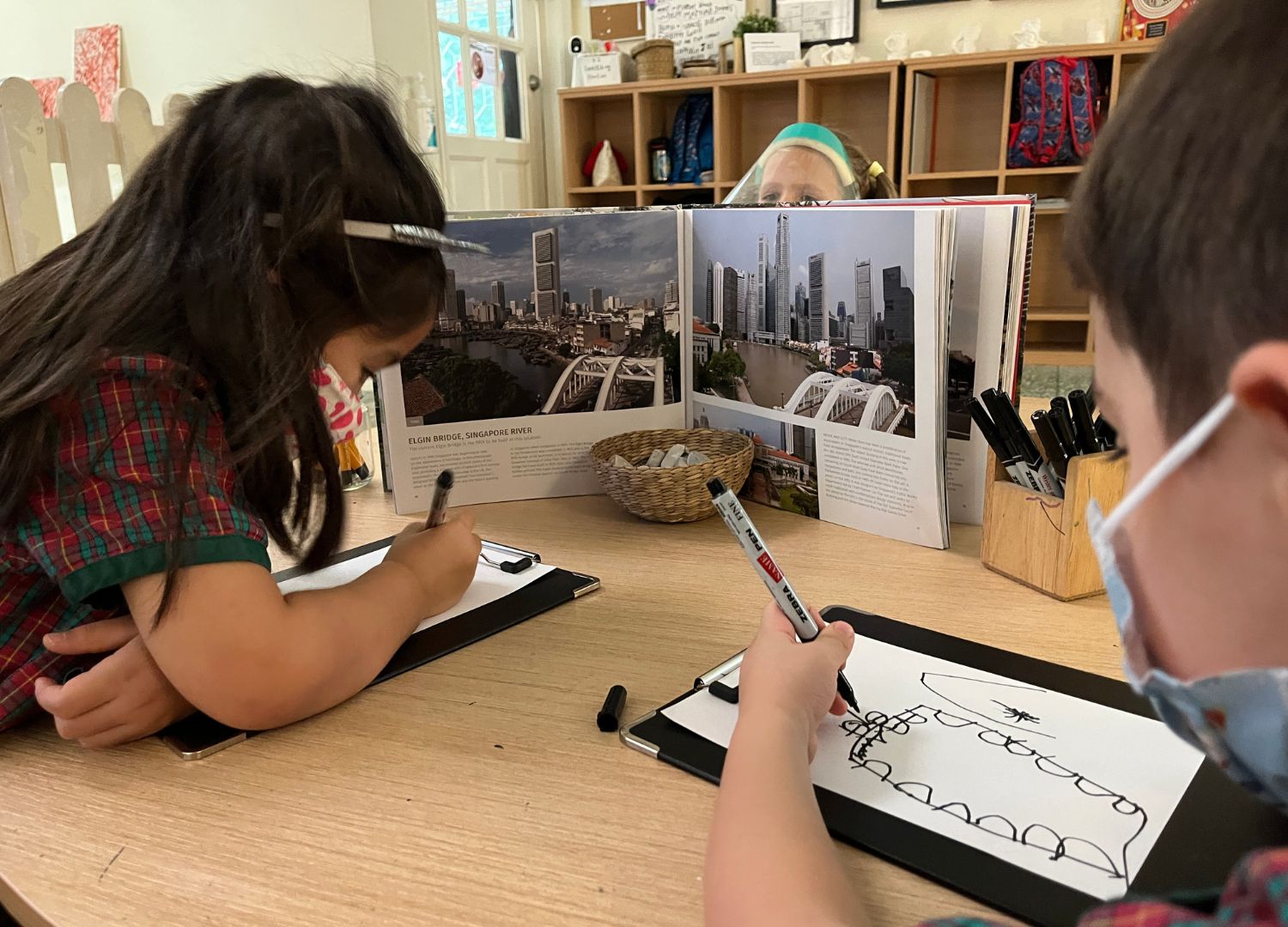-1.png)
EtonHouse Singapore
Launched in March 2022, the EtonHouse Global Classroom is a platform to connect and encourage borderless collaboration between EtonHouse schools worldwide. As an international education group with more than 100 schools across 9 countries, our goal is to explore international cooperation to celebrate lifelong learning, enrich learning experiences and forge international-mindedness in our children and educators through projects on a global scale.
Our first tie-up started with a Park Atelier project between EtonHouse International Schools in Singapore and Salvador Allende Infant-Toddler Centre and Pre-School in Italy. Inspired by the project, our children set out to find meaningful connections and opportunities, which led to the unfolding of possibilities in the campus’ back garden. The success and possibilities spurred us on further collaborations between EtonHouse International School Claymore in Singapore and EtonHouse International School Suzhou in China. This led to the birth of a collaborative inquiry, A Journey in Time.
What inspired the exploration of "Time”?
Atelia: The Claymore and Suzhou teams came together in a beautiful collaboration around shared interests that we had observed among our children. A common theme of construction and the differences between Suzhou and Singapore emerged. With Suzhou being a historically rich city and Singapore being a modern and young city, the concept of time, the changes and the stories that develop in these two places over time came to the forefront. In order to give the children a powerful voice in the project, we decided to include an opportunity for them to imagine and create what they think will happen in these two culturally diverse cities in the future.
Allen: I like the concept of time because the history of humankind can be viewed as the history of time. It is also very interesting and meaningful to discuss and inquire about bridges. There are so many stories behind each bridge. To some degree, stories mean history. And through history, we can find culture. I would like the opportunity to learn more about the Claymore campus and greatly look forward to our continued collaboration.

 Suzhou, China and Singapore
Suzhou, China and Singapore
What are some difficulties faced during the project, and how did you overcome them?
At the beginning of the project, schools in China were closed to the epidemic. However, they remained in touch with teachers and students in Singapore, using network resources to engage in online exploration and share their progress.
Ann: Our circumstances affected parents’ and children’s involvement and limited our resources. Since we could not meet and inquire physically, we had to find different ways to explore. It was a challenge and an opportunity for us to engage children by getting them to carry out scientific experiments at home, making the exploration smoother. Through online meetings, children then discuss their findings with each other. In the process of this project, we encountered some difficulty finding the next direction to take with the project. However, through our weekly meetings, we were able to discuss freely and give suggestions to find the next direction.
.jpeg?width=254&name=download%20(7).jpeg)
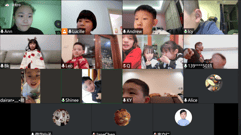 Online communication
Online communication
Jessica: Throughout the pandemic, we conducted various home-based learning and experienced several trials and tribulations. As adults, we often find that we can communicate easily. However, it can be a challenge for us too. I feel that throughout this collaboration, Suzhou and Claymore worked well together to find different ways to communicate to strengthen our partnership and pave the way for other EtonHouse schools to cross over the technology bridge and work together positively and collaboratively.
Atelia: We challenged ourselves to collaboratively come up with solutions despite being far apart from each other and overcome limitations such as social distancing. Through regular collaborative meetings between Suzhou and Singapore and sharing with the children creations, voices, videos, photos and ideas, we supported each other and successfully overcame these challenges.
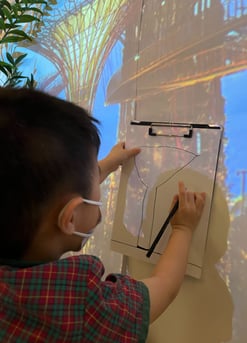
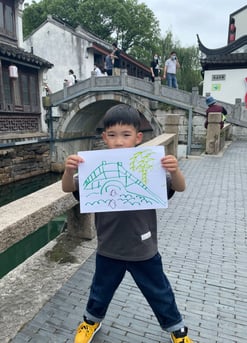
Children exploring and researching about present buildings
Fiona: It is important to personally put what you learn into practice and test various theories. To truly understand the bridges and culture in Suzhou, you need to immerse and interact with the environment. As an active participant in the project, I headed outdoors to research, made a video about the surroundings, and shared it with all the teachers and children in Singapore. I hope they can see the bridges in Suzhou and learn more about its culture through my camera lens. I hope this cultivates a deeper interest and curiosity in learning about Suzhou’s culture.
What did you and the children who are involved gain from the project?
Hanna: I think that as educators, we should always consider the effect of every learning experience on children and listen to their thoughts and opinions. For example, some boys are thinking about how to destroy a bridge with their favourite superhero Ultraman. That doesn’t mean they want to create havoc; they are showing their creative thinking. They might wonder whether the bridge is strong and want to test it. In their mind, they could be asking themselves: “Could my thumb destroy the bridge?” When you listen to their thoughts, you will get to know them much better.
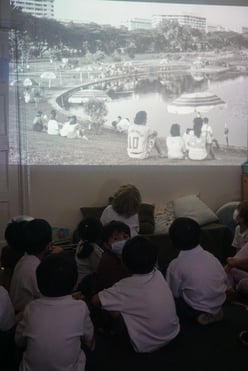
Children looking at images of Singapore in the past
Jessica: I was intrigued by how the children understand the concept of past, present and future. We had multiple conversations and group discussions as this can be a difficult concept to grasp. It was also wonderful to see our children connecting with the children in Suzhou through different modes of communication - answering, asking questions, responding and reacting to their photographs and drawings. As an educator, it is always interesting to see children from other campuses and countries, have insights into their interests and find ways to connect with the ideas, thoughts and feelings of the children in our community.
Lucille: The educators in Singapore are very enthusiastic, energetic and full of positive energy, which impressed me deeply. I also learned a lot from this project through our cooperation and communication, especially since we did this during the epidemic. We also thought about how we can encourage and guide our children and parents to join in the project in meaningful ways.
The Hundred Languages
Children have one hundred ways to express their views and thoughts.
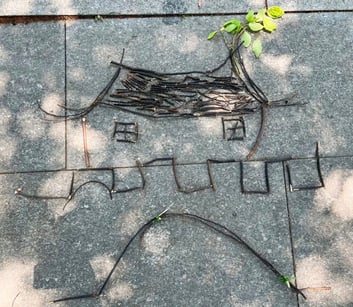 After visiting Panmen Scenic Spot, Max and his parents built Wumen Bridge with branches in the park. Through play, he explores further.
After visiting Panmen Scenic Spot, Max and his parents built Wumen Bridge with branches in the park. Through play, he explores further.
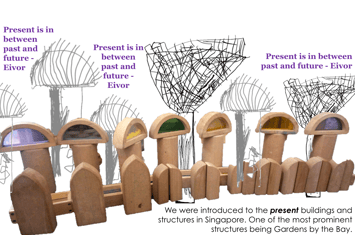
A compilation of the children's expressions
Stella: As the coordinator of this project, I am very grateful to the educators for their hard work, who faced up to the challenges of the epidemic with limited resources and jointly promoted exploration and exchanging of experiences in Singapore and Suzhou. Now that the children have returned to school, I believe that the rich school environment and social practice activities will also stimulate children’s enthusiasm for exploration.
-1.jpg?width=1500&name=Untitled%20design%20(8)-1.jpg)
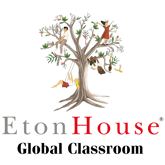
Learn more about EtonHouse Global Classroom projects from our team at EtonHouse International Schools.

